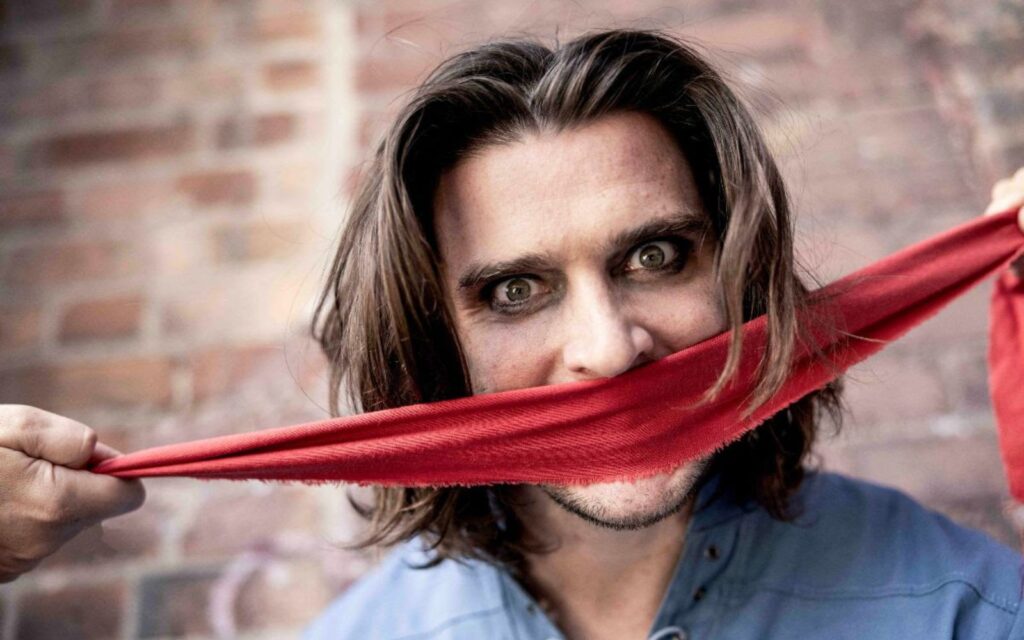For Walker, the Lasseter mystery had become an ‘unhealthy obsession.’ “I started collecting the information eight years ago when I came to Australia,” he says. Walker, who’d fled the UK to Australia after being typecast in what he calls ‘a terrible soap opera’ and unable to find more acting work, was already obsessed with the mystery of ‘Lasseter’s reef’ and went on to compile a 50,000 word document of his findings. “ I consumed all the books, visited the archives, talked to people – I enjoyed the process of research and investigation. It was a silly obsession; I did it for fun and put it in a file somewhere.” Walker hadn’t intended to become a documentary maker but researching the Lasseter story changed that. “I went to VCA and learnt how to make docos,” he said. “I forgot about Lasseter.”
Walker’s first feature length documentary was the unforgettable Beyond Our Ken, exploring the NSW based Kenja cult whose leader Ken Dyers committed suicide two weeks before the film’s premiere at MIFF. Beyond our Ken was screened twice on the ABC, and was nominated for two AFI awards. After this success Walker looked around for another project. “I went to the States to do a film about exorcism, which isn’t nearly as interesting or exciting as you’d think. It’s hard to feign interest – feigning enthusiasm is exhausting.” A plan to make a film about whaling in Japan subsequently fell through and Walker found himself wondering what to do next.
“I thought – I should give Bob Lasseter a call,” he recalls. “I did still have a lot of curiosity about the Lasseter story. Bob realised I did know a lot about the story; I was an AFI award-nominated film maker – I had a right to ring him. People hassle Bob all the time. Lots of nuts call him with their theories. He humours them.” And then, the moment: “Bob said ‘I’m going out again – do you want to come with me?’ Then I knew I had to make that film.”
“It’s been a long process. Four years in the making.” The toughest thing in creating Lasseter’s Bones was the amount of travelling involved. “We covered so much country,” Walker says. “If I was a sensible filmmaker I wouldn’t have done it. It was a ridiculous choice. Bob and I were out bush for a month. You’ve got to break camp, drive, bash through all that mulga, drive, make camp. We went over so much country, from Perth, to Sydney, central Australia, one of most hostile environments on earth.”
Lasseter’s Bones is a beautiful film telling a vast story set over vast terrain and a vast time span. The notion of obsession informs the film and Walker’s presence in the film, and being obsessed himself, gives the story a unique quality of immersion. Because the story of ‘Lasseter’s reef’ does so many twists and turns Walker had to find ways of fitting it all in to one film. “The Lasseter story is a beast,” he says. A friend from VCA, Tom Fraser, came up with some singular animation to fill some gaps. “I wanted to somehow show source material in the background, and animation in the foreground to create a collage effect,” Walker notes. “The animation represents real people and real events – incredibly complex to do but the film is made with heart, not with my head. A sensible person…”
There isn’t a neat resolution to Lasseter’s Bones. The film plays out to the point when it realises the real story is someone else’s altogether – it belongs to the people living there. “It’s a land of mystery,” Walker says. “We reached a gateway – we really went as far as anyone could go, really went the distance. We got closer to the gold than anyone else in the last 80 years has done. Any white man, that is. What I’ve tried to do is put in all the information you need to work it out; I think anyone watching the film will be able to work out what happened to Lasseter,” he says.
The end of Walker’s own journey comes when he is ‘given permission’ to stop, to stop wondering, stop working. A local man called Sandy ‘makes a call’ and the story ends with another mystery. “Perception of time is very different out there,” observes Walker, a comment which makes sense when you see Lasseter’s Bones. The documentary is about to get an outing in cinemas all over Australia, a thrill for the film maker. “It’s exciting that the film is going to be seen across the country.”
BY LIZA DEFOULI







